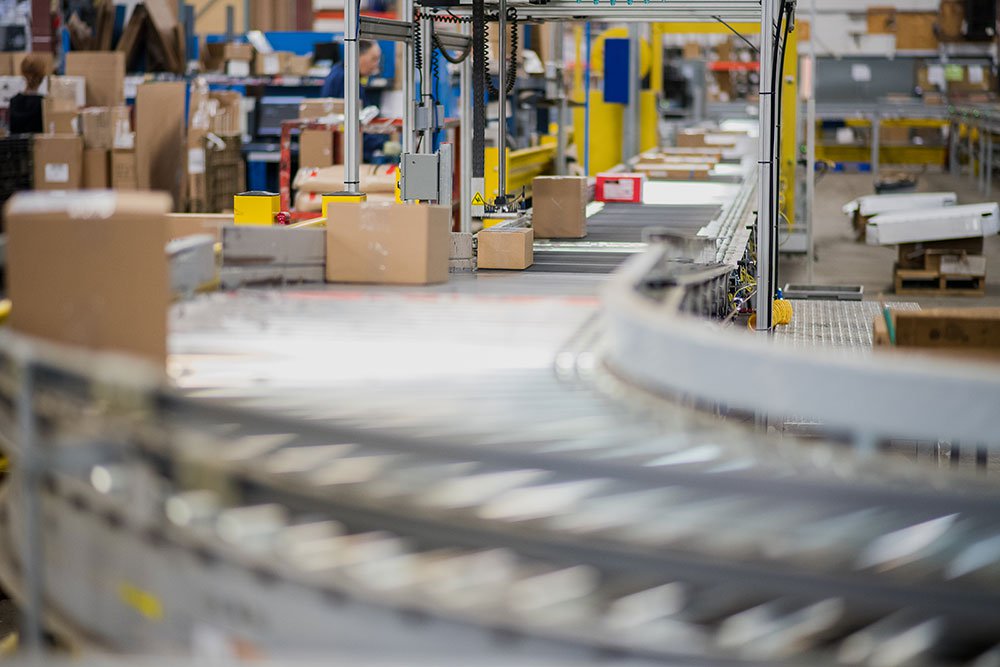
Automation Success Starts with the End Goal: Why System-Wide Thinking Matters in Material Handling
Ahmed Arif | 25 September 2024
Automation solves many operational challenges in today’s forward-thinking warehouses, distribution centers, and manufacturing facilities. From reducing labor costs to increasing order accuracy and throughput, material handling automation has become essential to modern operations. But while it’s tempting to look at automating specific tasks, the real value comes from considering how each solution fits into the overall system.
In his book, The Goal, Eli Goldratt delivers a key lesson—automation only succeeds when it serves the system's broader goals. The Theory of Constraints shows us that bottlenecks aren’t obstacles to eliminate but essential elements to manage for long-term success.
At Bastian Solutions, we know that improving one piece of the puzzle without considering the whole picture can lead to new bottlenecks and inefficiencies. Our approach is grounded in looking beyond local optimizations and focusing on seamless, system-wide improvement.
Why Bottlenecks Aren't the Enemy
In any material handling operation, from moving goods through a distribution center to organizing inventory in a manufacturing plant, there’s always at least one constraint that governs output. Rather than viewing this bottleneck as a problem, we see it as the key to understanding the operation’s rhythm. Like the pace car in a race, the bottleneck sets the speed for the entire system. The trick is to manage it wisely and ensure it’s always active rather than letting other system parts outpace it.
This is where our approach stands apart. Instead of just automating one area, like picking or packing, we design solutions for the entire system. By managing the bottleneck effectively, we prevent downtime and inefficiencies, ensuring that automation works harmoniously with the customer's ultimate goal.
A Practical Example: Picking Solutions vs. Throughput
Take a distribution center, for example. Automated picking solutions—whether a robotic arm, a goods-to-person system, or conveyor-driven pick modules—are often a focal point for customers. These solutions promise increased speed and accuracy in fulfilling orders, which makes sense, given that picking operations can make up over 50% of a facility’s labor costs.
However, adding a high-speed picking solution is only one piece of the puzzle. If the downstream packing stations aren’t equipped to handle the increased output, a bottleneck forms, leading to delays and inefficiencies. This creates excess inventory waiting to be processed. The result? A new automation solution that doesn’t solve the facility's broader operational challenges.
By applying the Theory of Constraints, we work with customers to identify the true bottlenecks and look for ways to optimize them, whether through automation, reconfiguration, or minor operational tweaks. For instance, if the packing stations are a bottleneck, we might recommend changes like automating labeling or reorganizing tools and materials before installing additional pack stations. In doing so, we create a system that balances speed and efficiency across the board.
Transforming Challenges into Opportunities
Recognizing bottlenecks as essential parts of the system rather than obstacles can help turn challenges into meaningful gains. Here’s how we approach this process:
1.Seeing the Whole Picture: We don’t focus on just one part of your operation. Our team takes a system-wide approach, evaluating how new automation solutions fit into the entire workflow and identifying potential bottlenecks that could arise.
2.Identifying and Managing Constraints First: Before implementing any new solution, we work closely with you to understand the key constraints in your current operation. Often, optimizing these constraints first leads to quicker and more impactful improvements in throughput.
3.Aligning with Your Broader Goals: Our goal is to provide more than superficial fixes. We engage with you to ensure that our automation recommendations align with your operational objectives, delivering lasting results.
4.Applying the Theory of Constraints: We use the Theory of Constraints to ensure that each part of your system works together smoothly. We optimize bottlenecks to drive improvements, ensuring your entire operation benefits from automation.
Elevating Material Handling with Holistic Automation Solutions
At Bastian Solutions, we pride ourselves on being more than just a supplier of automation equipment—we are integrators who consider every aspect of a facility’s operation. Our team combines decades of experience with cutting-edge tools like simulation and consulting to visualize and predict the impact of new systems before they’re implemented. This allows us to map out end-to-end solutions that solve immediate problems and anticipate future challenges. By leveraging technologies like robotic picking, automated storage and retrieval systems (ASRS), and intelligent conveyor solutions, we ensure that every part of the system works together for maximum efficiency.
By focusing on the entire operation, we ensure that every solution is not just a localized fix but a lasting improvement to your overall material handling operations. Ready to explore how we can help your facility achieve seamless automation? Our consulting and simulation services are here to guide you every step of the way. Start by talking with an engineer today!
As the Senior Director of Regional Office Solutions for Bastian Solutions, Ahmed and his teams are responsible for helping our customers achieve their goals in manufacturing, distribution, warehouse management and logistics. A graduate of Purdue University, Ahmed has been with Bastian Solutions for more than sixteen years in a variety of roles.
Comments
No comments have been posted to this Blog Post
Leave a Reply
Your email address will not be published.
Comment
Thank you for your comment.